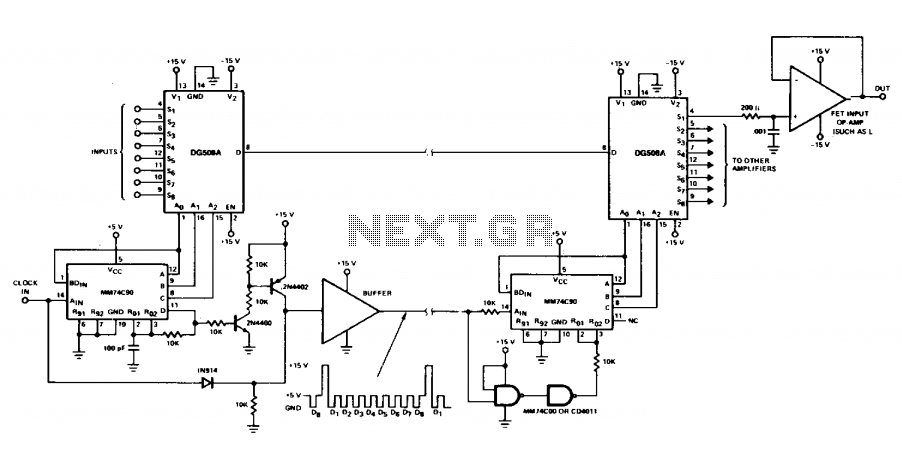
Microcontroller Verification Password system

An 8-bit password serves as the input to this system. The password entered by the user is compared with the actual password, which is set in the microcontroller through a microprogram. The outcome of this comparison process generates an 8-bit output at the output port, which is then directed to a logic circuit. If the user-entered password is correct, the output of the logic circuit will be high.
The described system utilizes an 8-bit password verification mechanism, which is fundamental in various security applications. The microcontroller plays a crucial role in this process, as it stores the actual password and executes the comparison logic. Upon receiving the user input, the microcontroller reads the 8-bit password and compares it against the stored password value using a binary comparison algorithm.
The comparison process involves checking each of the 8 bits of the entered password against the corresponding bits of the stored password. If all bits match, the microcontroller generates an 8-bit output signal indicating a successful verification. This output is connected to a logic circuit designed to interpret the result of the comparison.
The logic circuit may consist of basic logic gates such as AND, OR, and NOT gates, configured to produce a high output signal when the comparison result is positive. Specifically, if the output from the microcontroller indicates that the user-entered password matches the stored password, the logic circuit outputs a high signal, which can then be used to trigger subsequent actions, such as unlocking a device or granting access to a secure system.
In summary, this circuit design not only emphasizes the importance of secure password handling but also illustrates the integration of microcontroller functionalities with basic logic circuitry to achieve reliable password verification.An 8-bit password is the input to this system. The password entered by the user is compared with the actual password (password set in the microcontroller using the microprogram) by the microcontroller. The result of the comparison process is an 8-bit output at the output port, which is fed to a logic circuit.
If the user-password is correct, the o utput of the logic circuit will be high. 🔗 External reference
The described system utilizes an 8-bit password verification mechanism, which is fundamental in various security applications. The microcontroller plays a crucial role in this process, as it stores the actual password and executes the comparison logic. Upon receiving the user input, the microcontroller reads the 8-bit password and compares it against the stored password value using a binary comparison algorithm.
The comparison process involves checking each of the 8 bits of the entered password against the corresponding bits of the stored password. If all bits match, the microcontroller generates an 8-bit output signal indicating a successful verification. This output is connected to a logic circuit designed to interpret the result of the comparison.
The logic circuit may consist of basic logic gates such as AND, OR, and NOT gates, configured to produce a high output signal when the comparison result is positive. Specifically, if the output from the microcontroller indicates that the user-entered password matches the stored password, the logic circuit outputs a high signal, which can then be used to trigger subsequent actions, such as unlocking a device or granting access to a secure system.
In summary, this circuit design not only emphasizes the importance of secure password handling but also illustrates the integration of microcontroller functionalities with basic logic circuitry to achieve reliable password verification.An 8-bit password is the input to this system. The password entered by the user is compared with the actual password (password set in the microcontroller using the microprogram) by the microcontroller. The result of the comparison process is an 8-bit output at the output port, which is fed to a logic circuit.
If the user-password is correct, the o utput of the logic circuit will be high. 🔗 External reference
Warning: include(partials/cookie-banner.php): Failed to open stream: Permission denied in /var/www/html/nextgr/view-circuit.php on line 713
Warning: include(): Failed opening 'partials/cookie-banner.php' for inclusion (include_path='.:/usr/share/php') in /var/www/html/nextgr/view-circuit.php on line 713





